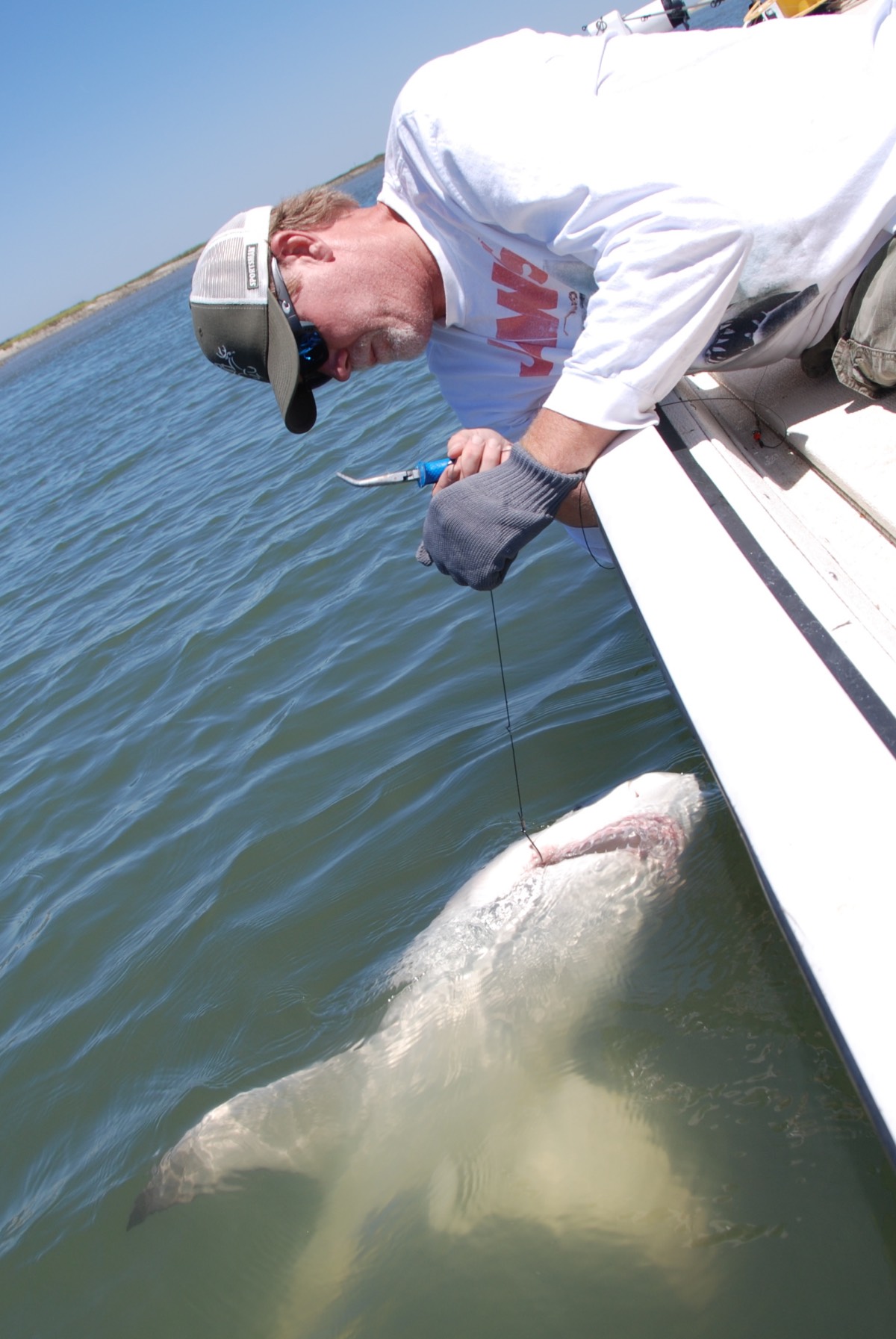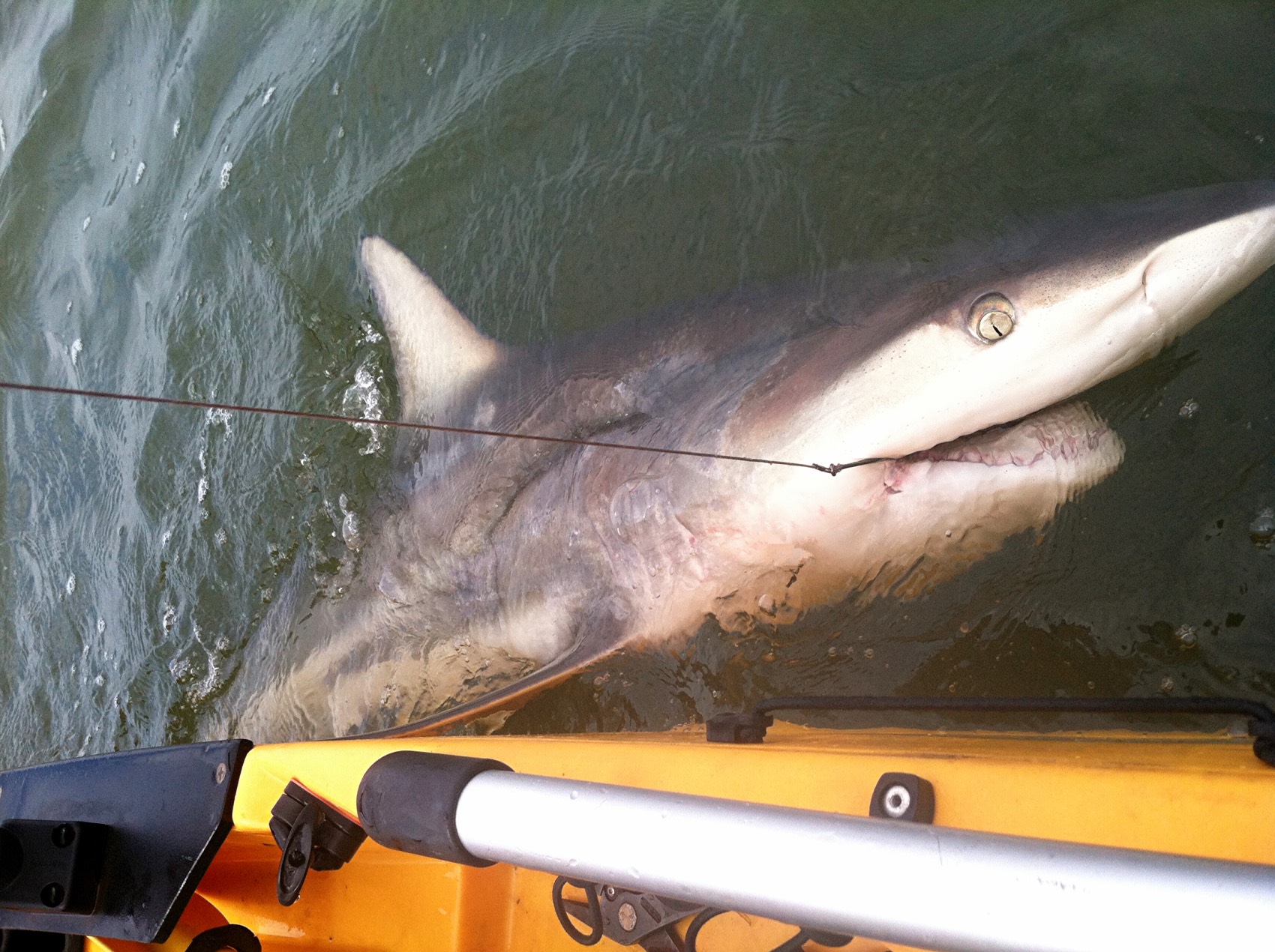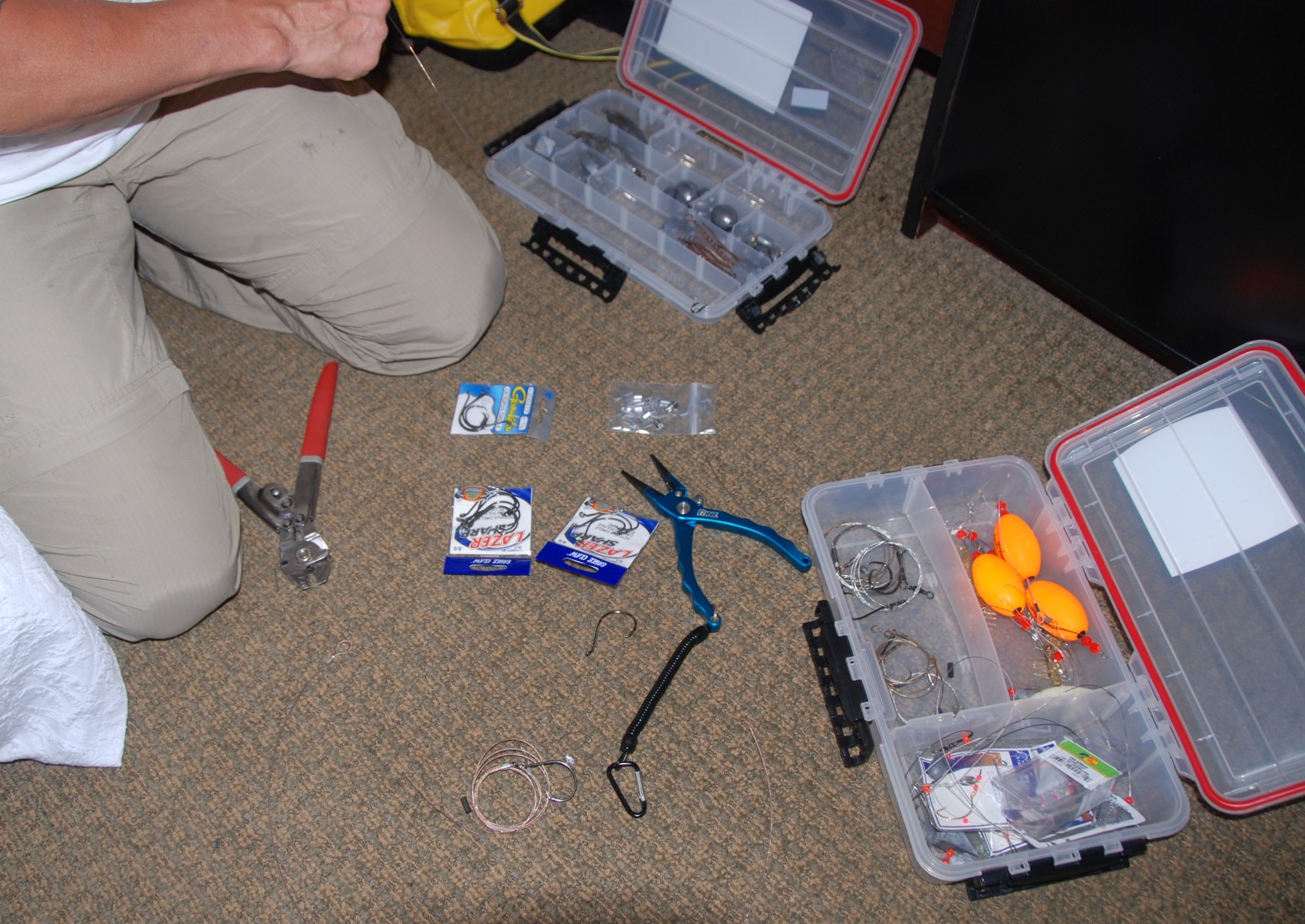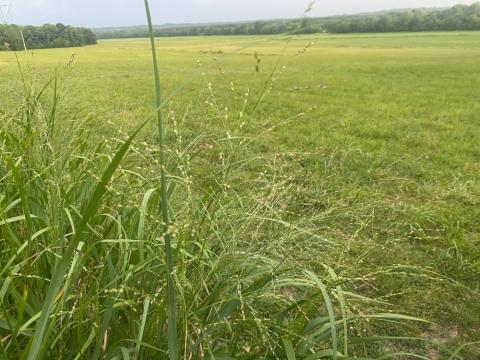Phillip Gentry
How and Where to Fish Inlets for Sharks
With Shark Week in the air towards the end of the summer, saltwater anglers looking to find some action often turn their attention to these denizens of the deep. Sharks can be found in nearly every type of saltwater available and even a few areas of inland freshwater, however, for recreational shark anglers, the best place to find a 5, 6, even an 8-foot shark is a major coastal inlet.
The Southern coastline has plenty of inlets and all the bigger inlets will hold sharks as big as you want to fool with. On the Atlantic coast, sharpnose sharks are the most numerous, followed by black tips and spinners, and on occasion, maybe a bull, lemon, tiger, or hammer head shark.
Anglers fishing coastal inlets can do so from the beach, assuming there is beach access, or from a boat anchored in the inlet. Inlets means food washing in on an incoming tide and food washing out on an outgoing tide. Find an area with deep water, especially on the edge of a shallow area that drops off into significantly deeper water, and you’ve likely found a decent shark hole.

Sharks provide ample fight, especially with a bigger fish, but there’s some challenge to removing hooks safely.
Typical shark fishing areas are on a hump at the intersection of two rivers or a drop –off where the tide has created a delta on the edge of a main channel. Ideally, shark anglers find better success anchored on a hump around 8 - 12 feet deep and positioning baits down current into 40 – 50 feet of water, the deeper the better. Freshwater anglers who understand how large catfish pattern in a major river usually have no problem adjusting to inlet shark fishing.
Because of hard current typical of most inlets, it’s best to use a sizeable Danforth anchor with about 3 times the rope as depth of water to hold the boat in position. In areas where the tide does not run so strong, auto locking features on modern trolling motors are taking away much of the rope work.
In the heat of summer when water temps may be in the upper 80’s or higher, target three levels of the water column when shark fishing – a balloon or cork line on top, a free line that will hang about mid-water column, and a weighted bottom rig.
More Shark Fishing Tips

Target all levels of the water column when shark fishing as the fish often hunt on various levels.
For shore bound anglers, a weighted rig will be the best option, either casting the rig as far as possible into the inlet or using a kayak to paddle the bait out to deeper water.
Don’t expect a shark over 5 feet to tap, nibble, or peck the bait. Typically, the rod goes from a normal elevation to bent double and screaming drag. You then must get any other lines in and start breaking the fish before he dumps your reel of line.
With the tide coming in over a deep hole, big sharks seldom head for shallow water. After an aerial leap or two, it’s mostly getting the fish up from the deep, tiring him out, then figuring out how to un-hook it.
Once a shark comes to the boat, the fun gets personal. Sharks may bump the boat several times, the first bump, he goes berserk and runs hard again. Repeat that 2 or three more times and he’ll usually come alongside. Once they get still, they quiet down. If you can grab a fin, roll the fish over and he’ll go dormant. That’s when you have to figure out how to take the hook out.
Digging around in a 5-gallon bucket-sized mouth full of teeth is a risky, but necessary task. Seasoned shark anglers are not fond of leaving hooks in or especially trailing wire to damage the fish. Some anglers grind the barb on their circle hooks so that the hook is easier to work loose. In hard-to-reach situations, use an extended pair of bolt cutters and cut the hook in half, allowing the other end to work loose after release.
Baiting and Rigging for Sharks

Rigging for sharks is fairly standard using wire leaders, shock leader, and large circle hooks.
Baits for big sharks is an easy choice. Of all the menhaden, croaker, bluefish, ladyfish and other cut bait that find their way into the bait bucket, an 18 – 24-inch live stingray beats them all hands down. A cut section of larger stingray comes in second.
While there are numerous ways to rig for sharks, a recommendation is to start with at least 300 yards of 65 pound (minimum) braided line on a heavy action rod and reel. Spinning reels for land and casting reels for boats unless you’re planting baits from shore with a kayak.
On the end of the braid tie a 30-foot section of wind-on leader consisting of 80-pound monofilament. The mono acts as shock cord and withstands tail whips and rough hide better than either wire or braid. To that leader attach a 12-foot section of 135-pound coated wire. Crimp a double loop in the leader end then crimp an 8/0 - 12/0 circle hook to the other, based on the size of bait.
Use the same rig for a bottom rig or a cork rig, you don’t have to do anything except clip in an 8-ounce trolling weight or clip in a hand-made cork rig using Sampo 80-pound coast lock snap swivels to adjust where you want the bait to ride in the water column.
Despite all the hype that surrounds these fish, sharks are respectable gamefish and deserve to be treated as such. The undeniable truth is that sharks play an important ecological role and the health of many coastal areas can be measured in the number of sharks that reside there.






























